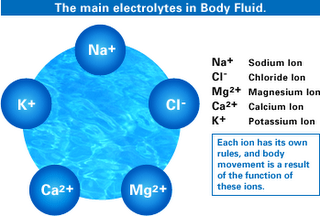Free Radicals Vitamins and Antioxidants

Somehow vitamins turned into antioxidants. Vitamin A became beta carotene. Vitamin E became alpha tocopherol. Vitamin C became ascorbic acid. Beta carotene, alpha tocopherol and ascorbic acid are not, never have been and never will be vitamins. Ascorbic acid and alpha tocopherol are simply the antioxidant components of the respective vitamin complexes. They are the protective or preservative portion of the whole A and C complexes. Why would these complexes need such a component? To protect the “good stuff” in the complex. Eating just the protective component of the complex is like eating only the eggshell and throwing out the egg. Yet this is what we buy when we purchase these vitamins over the counter. Study after study has shown that taking just the antioxidant component does not cause the same effect as taking the natural whole complex as found in food. In fact studies are showing that taking the synthetic antioxidant forms may actually be quite harmful. In 2004 a massive study was published in the medical journal Stroke involving 29,000 participants who took part in an anti-cancer study involving the use of beta carotene and alpha tocopherol (synthetic E). Those who took the isolated beta carotene suffered a 62% increase in intracerebral hemorrhage. Those taking alpha tocopherol had an increase in the relative risk of cerebral infarction (stroke) of 113%.
The National Cancer Institute published a study in 2005 showing that patients had an 86% more likely chance of developing a second primary cancer if they took Vitamin E in the tocopherol form compared to those who did not. The British Medical Journal published a study in 2003 showing an increased risk of cardiovascular disease associated with both hormone replacement therapy and antioxidants. The Annals of Internal Medicine concluded high dosages of E (alpha tocopherol) increased all cause mortality; those taking tocopherol E had the highest overall death rate of those tested. High dosages of E were considered 400 IU’s or above.
Real vitamins are found in nature in complex forms. Actual Vitamin E has at least alpha, beta, gamma and delta tocopherol, two F fractions, two E fractions, xanthine, lipositols and selenium. A 500 milligram tablet of actual Vitamin C complex as found in nature would be the size of a ping pong ball. It has ascorbic acid plus J factors, plus P factors, plus bioflavonoid, plus rutin, plus tyrosinase, plus other synergists we may not even know about. Beta Carotene is a raw material which must be converted in the intestine to Vitamin A at great energy expense. All require the entire vitamin complex in order to provide the beneficial results associated with vitamins.
If the natural complexes are so much better than just the antioxidant components then why does everyone just sell the antioxidant components? Because for one, they can. The FDA allows them to promote the antioxidant components as vitamins. Secondly, the synthetic fraction can be produced quite inexpensively. Ascorbic acid can be produced via corn syrup for instance (most synthetic vitamins are produced by major drug manufacturing companies by the way). To top it off, if you take everything out but the one component you can cram a lot of that component into one tablet or gel cap. In America more is always better. You look at the bottle and one has 10 mg of ascorbic acid and you look at the next bottle and it has 500 mg of ascorbic acid. The 500 mg bottle must be better because it has more so you buy that one. It sells better.
The antioxidant craze is not limited to vitamins either. How many times have we heard about the latest wonder product having “10 X’s the antioxidant capacity of Vitamin C” for instance? And yet studies are showing that antioxidants in general aren’t all that they are built up to be and in fact too much may be harmful .
Antioxidants came into vogue in relation to the Free Radical Theory of Aging. This originated with a man by the name of Denim Harmin in 1954. He gave rats BHT, a preservative put in food to keep it from spoiling when exposed to the air and found that the rats’ average life span increased. In 1956 the Free Radical Theory of Aging was published in the Journal of Gerontology. From that publication, handling free radicals with antioxidants became the “key to health and longevity”. He later switched his ideas and felt that extra cellular free radicals were not the most important factor relative to aging. Unfortunately the stage had been set with free radicals cast as the villains. Free radicals aren’t necessarily always bad. The immune system releases free radicals to help break down foreign protein and remove wastes for instance. So once again we are talking about maintaining proper balance in the body. A good way to create imbalance is to insert large quantities of unnatural synthetic vitamin fractions and highly concentrated antioxidant extracts into the body.
Classifying antioxidant fractions as vitamins has resulted in a lot of bad press for vitamins. When you examine the issue it’s easy to see that true vitamins are never really tested in these studies. Vitamins were discovered by finding out that people with diseases were lacking some important nutrient factor and that when this factor was supplied, the disease went away. True vitamins by their nature, by the way that they came to be classified as vitamins, are good for you. It’s when we make incomplete cheap copies in the laboratory and try to sell them off as the real thing that we get into trouble. Mother Nature supplies vitamins to us in food in a very balanced and properly structured fashion. It’s what makes food food. Laboratory synthesized isolates are chemicals.
*With information supplied by Mark Anderson, author of Empty Harvest











